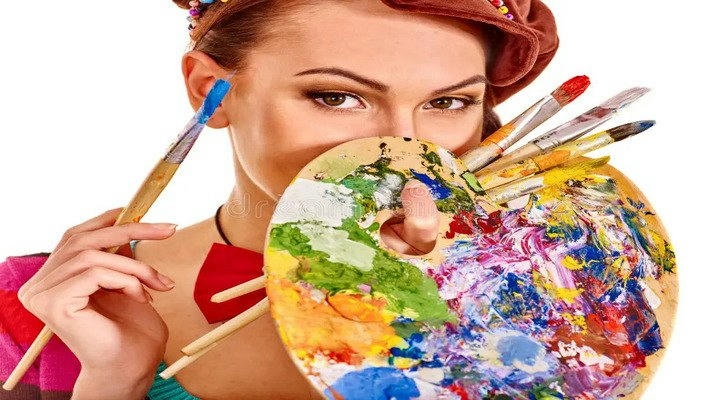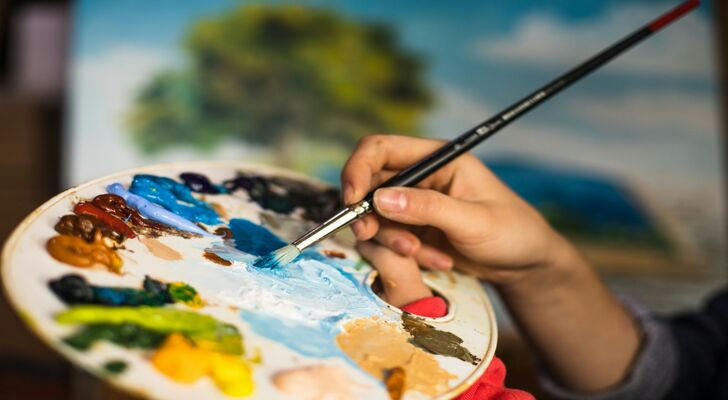How Painting Enhances Creativity and Problem-Solving Skills in Everyday Life

Creativity isn't just for artists—it's a crucial skill for problem-solving, innovation, and adaptability in everyday life. From tackling work challenges to finding new ways to organize a living space, creative thinking plays a role in countless situations. One of the most effective ways to enhance creativity is through painting.
Painting isn't just about making beautiful pictures; it trains the brain to think outside the box, develop fresh ideas, and approach problems from different perspectives. But how exactly does painting improve creativity and problem-solving skills?
1: Painting Strengthens Divergent Thinking.
Creativity often involves divergent thinking—the ability to generate multiple ideas from a single starting point. This skill is essential for brainstorming, adapting to change, and finding innovative solutions.
- How painting helps:
• When mixing colors, experimenting with brush strokes, or deciding on a composition, the brain is forced to consider multiple possibilities.
• Instead of following rigid instructions, painting encourages spontaneous decision-making and imaginative solutions.
• A study published in the journal Thinking Skills and Creativity found that engaging in visual arts, including painting, significantly improves divergent thinking skills. Participants who painted regularly demonstrated a higher ability to think creatively compared to those who did not.
- Real-life application:
• A marketing professional brainstorming a new campaign needs to think of multiple strategies. A habit of painting trains the brain to explore different options without fear of failure.
• In business, leaders who embrace creative problem-solving are more likely to develop innovative solutions to challenges.
2: Painting Improves Problem-Solving Through Trial and Error.
Problem-solving often involves experimentation and adaptation. Many real-world challenges don’t have a single correct answer, requiring flexibility and patience.
- How painting helps:
• Every painting session is an experiment. Sometimes a color choice doesn’t work, or a brushstroke goes in the wrong direction. Instead of starting over, artists learn to adjust and turn mistakes into part of the final artwork.
• A study in Psychology of Aesthetics, Creativity, and the Arts found that individuals engaged in creative activities, including painting, demonstrated better problem-solving skills by adopting a more flexible approach to challenges.
- Real-life application:
• A software developer debugging code must adjust and refine the program repeatedly. The adaptability learned through painting translates directly to troubleshooting errors in coding.
• Engineers designing new products often go through multiple prototypes before finding the perfect design. The patience and iterative thinking developed through painting make this process more intuitive.

3: Painting Boosts Observational Skills and Attention to Detail.
Strong problem-solving skills require the ability to analyze details and recognize patterns. Whether in science, business, or everyday decision-making, attention to detail can be the difference between success and failure.
- How painting helps:
• When painting, the brain trains itself to notice subtle differences in color, lighting, and perspective.
• Studies have shown that artists develop enhanced visual-spatial intelligence, allowing them to see patterns and relationships more effectively.
• Research from the Journal of Vision indicates that individuals who engage in visual arts exhibit sharper perceptual skills than non-artists.
- Real-life application:
• A surgeon performing delicate procedures relies on sharp observational skills to make precise incisions.
• A detective solving a case must pay close attention to small but crucial details—just like an artist analyzing a reference image before painting.
4: Painting Encourages Risk-Taking and Overcoming Fear of Failure.
Many people struggle with fear of making mistakes, which can limit their ability to think creatively or solve problems efficiently. Overthinking and hesitation often prevent action.
- How painting helps:
• Since there’s no “wrong” way to paint, the activity teaches that mistakes are simply part of the process.
• Many famous painters, including Vincent van Gogh and Pablo Picasso, emphasized the importance of experimentation and imperfection.
• A study published in Creativity Research Journal found that individuals involved in artistic activities displayed greater resilience and willingness to take risks in other aspects of life.
- Real-life application:
• Entrepreneurs who take calculated risks are more likely to build successful businesses. Learning to embrace uncertainty through painting can help develop this mindset.
• In public speaking, confidence and adaptability are key. Someone who regularly paints may find it easier to adjust their speech based on audience reactions without panicking.

5: Painting Enhances Emotional Intelligence and Intuitive Thinking.
Strong problem-solving isn’t just about logic—it also involves understanding emotions, both in oneself and in others. Emotional intelligence is a key factor in making sound decisions and fostering collaboration.
- How painting helps:
• Colors, shapes, and brushstrokes often express emotions in ways words cannot.
• The process of painting allows for self-reflection, helping individuals become more in tune with their emotions.
• Research in Frontiers in Psychology suggests that engaging in art activities enhances emotional intelligence by improving self-awareness and empathy.
- Real-life application:
• A leader managing a diverse team benefits from strong emotional intelligence, allowing them to resolve conflicts effectively.
• Teachers and counselors who develop empathy through artistic expression can better understand and support their students or clients.
Conclusion.
Painting is more than just a creative hobby—it’s a powerful tool for strengthening the brain’s ability to think critically, solve problems, and adapt to challenges. Whether it's enhancing divergent thinking, improving observational skills, encouraging risk-taking, or boosting emotional intelligence, painting has far-reaching benefits in daily life.
By making painting a regular practice, it becomes easier to approach challenges with a fresh perspective, embrace mistakes as part of the learning process, and develop the problem-solving mindset needed for success. So next time a creative block or tricky problem arises, consider picking up a brush—because sometimes, the best solutions come when thinking in color.
